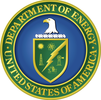News Release from U.S. Department of Energy (DOE)
Wind Industry Profile of
Addressing Misinformation on Offshore Wind Farms and Recent Whale Mortalities
As of now, there is no evidence to support speculation that noise resulting from wind development-related site characterization surveys could potentially cause mortality of whales, and no specific links between recent large whale mortalities and currently ongoing surveys.
The Facts
At this point, the Bureau of Ocean Energy Management (BOEM) along with the National Oceanic and Atmospheric Administration (NOAA), the lead federal agency for marine mammal science and management, have found “no evidence to support speculation that noise resulting from wind development-related site characterization surveys could potentially cause mortality of whales, and no specific links between recent large whale mortalities and currently ongoing surveys.” NOAA oversees several regulatory processes that help reduce impacts to marine animals and their habitats from human activities, including offshore wind development.
In accordance with NOAA, the Bureau of Ocean Energy Management, Marine Mammal Commission, and New Jersey Department of Environmental Protection have determined that there is no evidence that these early-stage wind development activities have resulted in serious harm to whales. Past and current research show that vessel strikes and entanglements in fishing gear continue to pose a dangerous, life-threatening risk to whales.
NOAA, BOEM, DOE, and other partners will continue to gather data to help determine the cause of death for these mortality events. We will also continue to explore how sound, vessel, and other human activities in the marine environment impact whales and other marine mammals.
DOE's Role
Wind energy plays a critical role in the U.S. Department of Energy’s (DOE) strategy to help the U.S. develop a diverse energy mix, address the climate crisis, and achieve net-zero carbon emissions by 2050.
DOE works with BOEM, NOAA, and other federal, state, Tribal, and private partners to help advance deployment of offshore wind energy. In late March 2023, DOE released a comprehensive summary, Advancing Offshore Wind Energy in the United States, U.S. Department of Energy Strategic Contributions Toward 30 Gigawatts and Beyond, to outline the agency’s strategy to help deploy 30 gigawatts (GW) of offshore wind energy by 2030. Deploying 30 GW of offshore wind would provide enough power for 10 million homes, support 77,000 jobs, and spur $12 billion per year in direct private investment.
This strategy highlights DOE’s role in supporting research to better understand and then avoid, minimize, and mitigate impacts on living marine resources and habitats. Current and future DOE-funded research in this area will inform just, sustainable, and timely development of offshore wind energy.
- DOE maintains a database of research on environmental effects of wind energy and is working to identify and address research gaps.
- DOE is funding projects that will provide critical environmental and wildlife data to support sustainable offshore wind development and ocean co-use.
- DOE is supporting innovative technology, such as real-time acoustic monitoring platforms, to protect marine mammals.
- DOE funding is supporting ocean-area co-use projects that monitor protected marine mammals and design floating arrays for fishing compatibility.
Continuing to base our response in sound science is the best way to live up to our shared commitment to environmental sustainability, and to ensure Americans and their environment benefits from offshore wind development.
- Source:
- U.S. Department of Energy
- Author:
- Press Office
- Link:
- www.energy.gov/...
- Keywords:
- USA, DOE, whale, death, offshore, wind farm, energy, project, Atlantic, developer, BOEM


























